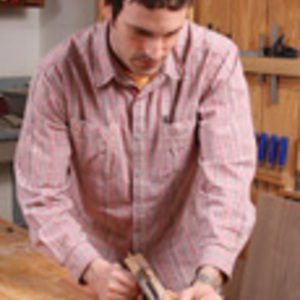Shopmade Templates Simplify Dovetail Layout
Aluminum flashing is transformed into simple patterns for laying out multiple dovetail joints with easeBeing a full-time woodworking instructor means Mario Rodriguez has to invent techniques that effectively speed up the construction process while not impacting the quality of his students’ projects. When it comes to laying out dovetail-after-dovetail—think multiple drawers on a tall dresser—Rodriguez turned to aluminum flashing for a quick assist.
By laying out his dovetail pattern on a sheet of aluminum step flashing, he creates a reusable template that’s perfect for laying out multiple drawer sides of the same dimension. The flashing is thin enough to score with a utility knife and then cut with scissors—leaving a crisp template that will offer years of trouble-free service.






















Comments
This might be fine and good if you will use the same pattern for multiple different projects down the road. Otherwise, an experienced woodworker could probably complete all the layouts for a single project in the time it takes to make the template. In addition, one may wish to use two or more dovetail patterns on different elements of the same project for asthetic/artistic purposes.
Do you buy aluminum step flashing in a small roll or just the individual pre-bent right angle step flashing pieces? I found both types of aluminum step flashing sold at my local Home Depot.
This dovetail layout template technique, or other joint template for that matter, is a natural time saver when one is going to repeat the layout many times such as in making multiple drawers.
I can also see how these templates would help keep things moving forward while minimizing errors in a classroom setting with multiple students.
Really? Why not do the layout directly on your piece? Unless, as rlofts said, it will be useful for repetitive projects where you absolutely want every drawer to be the same.
I would rather lay-out my dovetails starting with the width of the chisel I am going to use for chopping out the waste. The template is good for one layout pattern on one drawer depth and one wood thickness. Kind of limits its usefulness. Also, that thin aluminum won't survive in storage; it will get bent every time you take it out or put it back.
Here’s another thought. Why not lay out, cut , and fine tune the tails on your first piece and then use that piece to lay out the tails on the rest of your pieces? You will achieve the same objective without wasting time making a template that may never be used again on other projects.
Log in or create an account to post a comment.
Sign up Log in